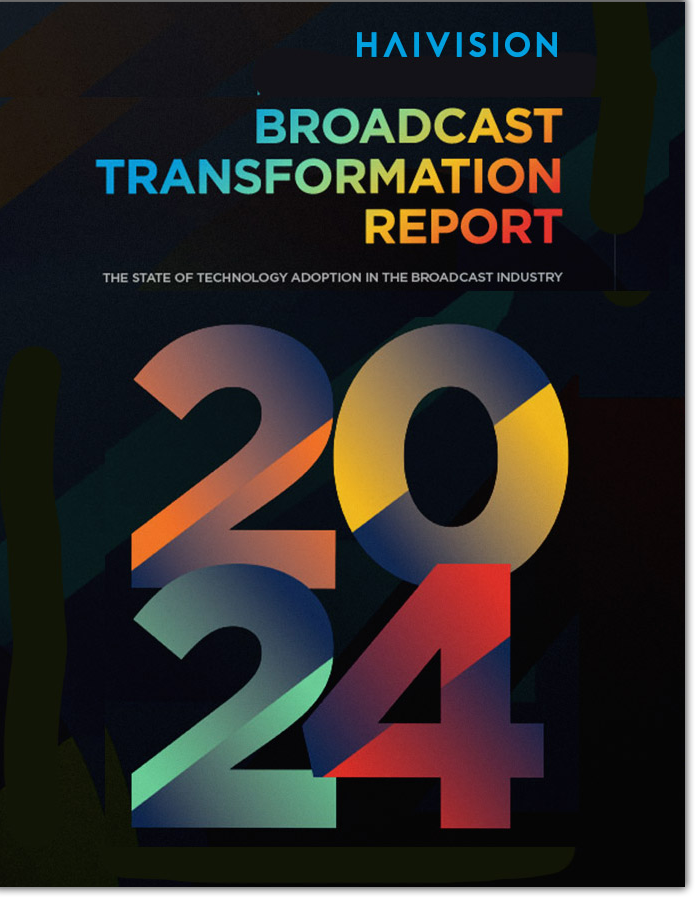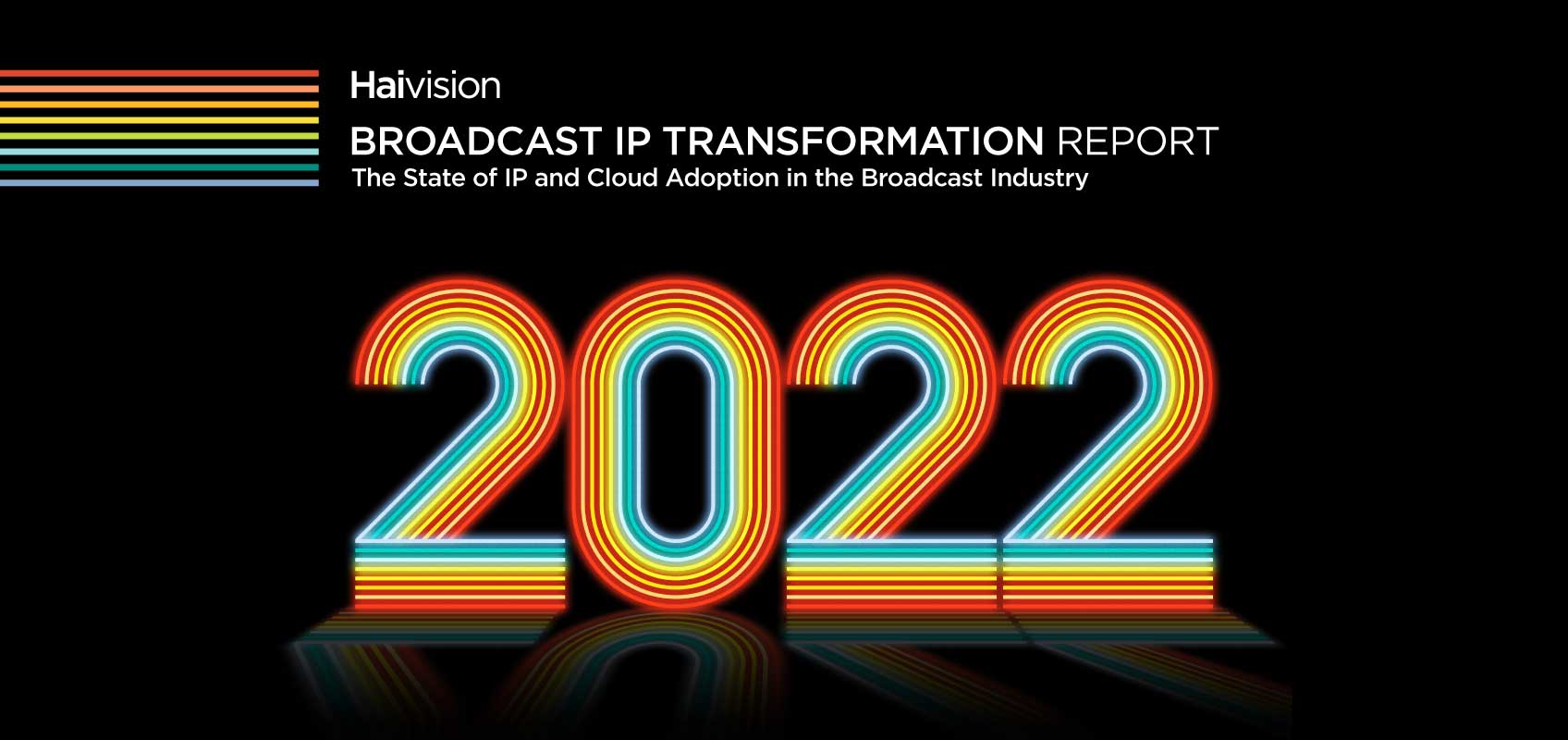We’re thrilled to announce that we have just released our global annual report on the state of cloud and IP transformation in the broadcast industry, the Broadcast IP Transformation Report 2022. For the third consecutive year, we’re sharing the results of our survey. You can get the full report here.
Late last year we polled over 650 broadcast and video streaming professionals from around the world, representing a multitude of organizations including national television networks, OTT and broadcast service providers, and production studios. Survey respondents fill several roles within the broadcast world, including engineers, producers, as well as post-production professionals.
These survey findings give us a clearer understanding of how broadcasters are adapting to their new reality, what the biggest obstacles they are facing as well as what technology they are currently using and planning to invest in.
A huge thank you to all of those who took the time to share their opinions – we hope you find the results as insightful and fascinating as we do. In this post, we’re exploring five key highlights from this year’s report.
SRT is the Most Widely Used Transport Protocol
SRT, the Secure Reliable Transport open-source protocol, which was designed to optimize streaming performance across unpredictable networks such as the internet has seen rapid growth in its adoption since being open-sourced in 2017. Now employed by 63% of the broadcasters we surveyed, it has overtaken the legacy RTMP protocol as the most popular method of transporting video over IP.
Broadcasters are Forging Ahead with IP Transformation
65% of those surveyed have already migrated at least part of their broadcast infrastructure to IP, despite ongoing challenges including dealing with budget limitations and the complexities of transitioning workflows.
The Future is Hybrid
Like many other industries, the past two years have significantly impacted how broadcasters are working and producing content. Of those surveyed, 60 percent believe that the future will involve employing new hybrid workflows with a growing mix of on-premise, IP, and cloud technologies for both on-site and remote staff.
The Internet is Fueling Live Production
79% of broadcasters are relying on the internet for contributing video to live production workflows. The internet and low latency video streaming are also instrumental in decentralizing remote production, enabling staff and talent to work from anywhere.
5G Continues to be the Biggest Technology Trend Impacting the Industry
For the third consecutive year of this report, with 68% of the vote, 5G tops the list of technologies that will most impact broadcasters within the next 5 years. 5G is poised to make high bandwidth, low latency internet access ubiquitous and extend IP-based workflows for any type of live event.
Conclusion
The last two years have brought about rapid and lasting changes to the way television broadcasters contribute, produce, distribute, and deliver content. With significant advances made in IP and cloud technology, broadcasters have been quick to recognize their transformational potential, allowing them to harness unprecedented flexibility and scalability.
The trend towards remote production with minimal equipment and staff sent on location continues. At the same time, live production workflows are being decentralized and broadcasters are leveraging low latency streaming technologies to enable real-time collaboration among talent and staff over long distances and even to remotely operate broadcast equipment.
Thanks to its pioneering technology, strong partnerships, and steadfast commitment to the success of its customers, Haivision has been helping broadcasters around the globe address the many challenges presented in this new environment.


